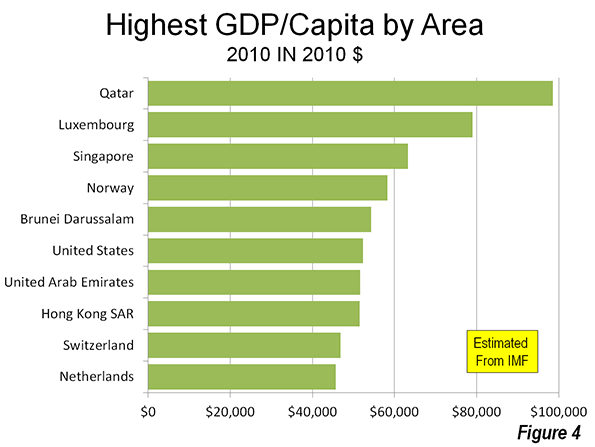Contents
As trained and experienced workers climb up the leadership ladder, they need to be replaced with newer employees. A good way to minimize the effect felt in the overall organization is the role of mentorship and one-on-one training. Most of all, a well-documented workflow should be made available to each employee coming into a new role in the organization. Performance management process is a process executed at regular intervals of time in a collaborative and communicative environment. In this, both, the employees and employer get a chance to share their feedback.
The results an employee has achieved are compared with planned outcomes to evaluate and summarize their contributions to the organization. Any outstanding issues between the two parties are also resolved at this stage. The overarching goal of performance management is to create an environment where individuals and departments take complete control of the development of their capabilities and those of their businesses. The sometimes-necessary uncomfortable talks for managers cannot be had through a technological performance management approach. The one responsibility that managers must undertake would be to have such conversations face-to-face.
- It is also known as a process by which the organization aligns the resources, systems and employees to strategic objectives and priorities.
- Performance management is defined as an ongoing process of identifying, measuring, and developing the performance of the employees in the organization.
- Coaching emphasizes what the employee does right, and how they can do it better.
- With the appropriate performance software solutions, you can monitor your team’s progress in real-time and make necessary adjustments and course corrections.
- It is used to create a work environment where people are motivated to provide their best performance and do quality work.
- Marketing management is concerned with the ultimate execution of these plans with the ultimate aim of achieving the organization’s goals.
D) Special efforts were taken to build up the skills required to implement the new performance management system such as skills to deliver feedback and develop effective two-way communication and coaching. Achieving individual employee role of performance management is to accomplish goals of employees along with organizational objectives. Besides, they also started using a special system to set goals- They started using Objectives and OKRs to rewire the goal setting process to achieve greater results.
Why Is Performance Management Important?
Employees’ training as well as their action and behaviour are to be an important feature of the employees’ performance appraisal. One is coming from the bottom to the top, the other from top to bottom; however, both are assessing performance and giving ideas on a better management strategy. Teams should be able to anonymously send in reviews of their supervisors, etc. This way, there can be improved leadership and a smoother relationship between co-workers. A system where employees’ ideas are implemented is one where everyone wants to contribute something useful.

Depending on the expertise/learning garnered across the process, these results may serve as stepping stones to improved performance. 63% of Gen Z employees want to receive frequent feedback from their managers rather than just an end-of-the-year review. The management checks in to understand the progress, roadblocks, existing and surmounted problems, ideas, etc. In the monitoring phase, there is also room for redefining goals set during the planning phase. With regular check-ins like feedback, status update, and guiding, the performance management process aids in identifying the problems before they start impacting the business. This process makes work highly flexible as the changes can be made to the project/tasks/goals as and when the need be.
FEATURED RESOURCES
However, WD Scott’s system did not gain much momentum then and it was only during mid- 1950s that business started implementing it. The companies then began using personality-based systems to access employee performance. By the end of the decade, this system started showing adverse results as it lacked self-appraisal. Performance management is a structured visual approach to monitoring of the organizational performance, highlighting issues and reacting to them in a timely manner. Performance management system is required in the organization for the purpose of meeting obligations to customers, employees, shareholders and other stakeholders.
A skill set is a group of related skills, abilities, and experiences that enable an employee to do their best possible work. To ensure that everybody feels comfortable having regular, light interactions, schedule a meeting with managers and instruct them on your management methods. 77% of HR executives agree that performance evaluations don’t accurately reflect employee work performance.

It should create a positive work culture through constant reviews, feedback, and open-ended conversation. Towards the beginning of 2000, organizations started adopting annual performance reviews as the most effective means to access employee performance. An ineffective performance management system does not only result in a waste of time and resources, but it also lowers productivity. It also dampers the morale of employees and leads to reduced engagement and a higher rate in attrition.
Getting employees involved in the planning process help them to understand the goals of the organization, what needs to be done, why it needs to be done, and how well it should be done. Further performance plans are to be flexible so that they can be adjusted for any change in the operating environment. It involves a never-ending process of setting goals and objectives, observing performance, and giving and receiving of the continuous feedback. It therefore creates a direct link between employees’ performance and organizational goals, and makes the employees’ contribution to the organization explicit. Performance management helps to identify the one employee that keeps pulling the rest of the team down. Once identified, they can then be provided constructive feedback, and training and development of necessary skills can be provided, among other corrective measures.
The 5 Benefits of Performance Management
The HR team trains managers to have clearly articulated goals, it helps convert organizational goals to individual goals and acts as a third party to see if the written down goals are clearly measurable. Improve organizational performance by assessing current employee performance and also presenting plans for improvement. The second phase of performance manageme日本藤素
nt started in the late 1960s and continued till the early 1970s.

Engagement management model developed by Gruman and Saks The model starts with performance agreement, which delineates the goals and objectives that employees will be expected to realize in organization. This element includes a review and an agreement of a psychological contract in addition to establishing goal for organization. The absolute objective of a performance management system is not to make employees happy. An effective performance management system motivates both employees and managers to strive for excellence. The company’s goals and objectives should be clearly outlined and communicated to employees at all levels of the organizational hierarchy. The efforts should thereby be directed to achieve the same in the best possible way.
Organizations should build a work culture that is laid on the foundation of unbiased work discussions, positive feedback, mentoring and development plans. Ensuring friendly and engaging dialogue between employees, supervisors and team members. Establish a mutual understanding to work in harmony to achieve organizations’ mission and objectives. Presenting employee’s unbiased feedback continually during their performance delivery period.
Objectives Of Performance Management System
During this phase, newer traits like team appraisals, communication, culture building, and conflict reduction were given utmost importance. 360-degree feedback became the newest tool to get employee ratings from multiple sources. During the third phase of evolution, the ‘Annual Confidential Reports’ were completely replaced by performance appraisal. The key hallmark change in this stage enabled employees to present their accomplishments in the performance reports. These accomplishments were described in the form of self-appraisal and done on a yearly basis. If implemented correctly, it can bring a drastic positive change in the company, at all levels.
Employees, in particular, are encouraged to defend the organization’s core values and work with the belief that achieving business objectives shall be beneficial to them. Performance management is a tool to improve individual and business performance on a whole. ’ Employee performance management helps to achieve desired results by accessing performance through a mutually agreed framework of defined goals, objectives and competencies. Since the performance of the employees is an important aspect of the organizational performance, the employees’ performance appraisal is a very important feature in the performance management process. The performance management is a process which needs time for planning and implementation.
For an effective performance, the organization is to plan the work in advance. Planning of the work includes setting of the performance expectations and goals. https://1investing.in/ To achieve the desirable performance levels, it becomes necessary to channel the efforts of the employees towards achievement of the organizational objectives.
For the same, every small, short term or large, long term goal should be taken into consideration while also understanding how can they be improved with trainings or interventions by the manager. As per the Gallup Workplace Study, only 22% of employees are engaged and thriving. Clearly, only these 22% deliver strong work performance even when the times are tough. This also means that 78% of the workforce has the potential to perform better if their organisations adopt the right type of management process. Organizations that focus on individual performance to assess employee success are then dismayed when they observe a lack of teamwork and collaboration. It is always the best step to review the Key Performance Indicators after sometime especially when you are a startup trying out new ideas every other day.

